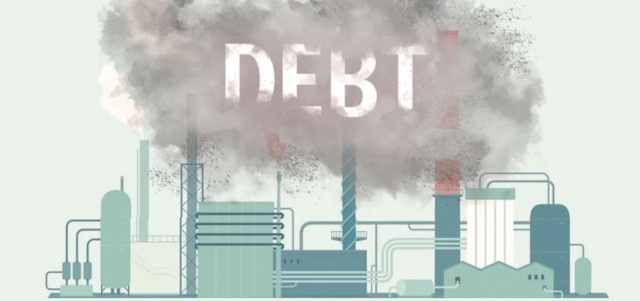Government debt soars to Rs64 trillion
Increase of over 29% comes as World Bank report cautions on growing risks

The federal government debt has surged to a staggering Rs64 trillion by the end of August 2023, reflecting an alarming increase of over 29% in just one year. This unsettling trend has raised concerns about fiscal sustainability and the adverse impacts of steep currency devaluation come at a time when the World Bank has cautioned Pakistan about the growing risks of its macroeconomic framework.
The State Bank of Pakistan (SBP) reported, on Thursday, that the federal government’s debt has soared by Rs14.5 trillion, constituting a substantial 29.2% rise compared to the same period last year. This rapid escalation in debt is widely seen as unsustainable, yet corrective measures to curb this alarming trajectory have not been implemented.
The growing debt stock carries significant fiscal costs and exposes the country to debt vulnerabilities, as highlighted in the Pakistan Development Update report by the World Bank. The report also emphasised that persistent fiscal deficits and debt repayments have resulted in consistently high annual gross financing needs, averaging 27% of GDP over the past decade. This level is notably higher than the emerging market threshold of 15%.
In the past two decades, Pakistan has witnessed two consecutive years of the highest budget deficits in 2022 and 2023. The World Bank’s economist, Adnan Ghuman, pointed out that for the current fiscal year, a budget deficit of 7.7% of the GDP is anticipated, a staggering Rs1.3 trillion above the government’s target.
The World Bank expressed concerns over these persistent large budget shortfalls, which have led to the rapid accumulation of public debt. This, in turn, has crowded out private investment and contributed to macroeconomic volatility.
Read Further tax on salaried class sought
The SBP data unveiled an alarming 39% increase in the external debt of the federal government, reaching Rs24.2 trillion within a year. A substantial Rs6.7 trillion increase in external debt was primarily attributed to currency depreciation. As of August 2022, external debt stood at Rs17.4 trillion, excluding the International Monetary Fund (IMF)’s liabilities.
The sharp depreciation of the rupee against the dollar, reaching a record level of Rs305.6 to a dollar by the end of August this year, marked a 40% devaluation in just one year. However, recent efforts to curb currency smuggling and hoarding by the military have led to a modest recovery of the rupee to Rs283.6 by Thursday, potentially reducing the external debt stock for September.
Of the total public debt, external debt accounted for 40.9%, while short-term debt stood at 13.7%, according to the World Bank. Liquidity risks remain sizeable, given substantial external financing needs and low foreign reserves, cautioned the lender. Large revaluation losses resulting from the weakening of the domestic currency, along with increased gross financing requirements and substantial amortisation payments, have collectively contributed to the escalation of public debt.
Pakistan secured significant loans from multilateral and bilateral creditors in July. However, a portion of this financing is not currently reflected in the federal government’s books, pending the release of the first-quarter debt bulletin by the central bank. Surprisingly, this trend reversed in August, contrary to the expectations of Pakistani authorities.
The federal government’s total domestic debt surged to Rs39.7 trillion, marking an increase of Rs7.6 trillion or 24% within the past year. This mounting debt load has led to a substantial rise in the cost of debt servicing, which is expected to exceed the budgeted figure of Rs7.3 trillion during the current fiscal year.
Published in The Express Tribune, October 6th, 2023.
Like Business on Facebook, follow @TribuneBiz on Twitter to stay informed and join in the conversation.



















COMMENTS
Comments are moderated and generally will be posted if they are on-topic and not abusive.
For more information, please see our Comments FAQ